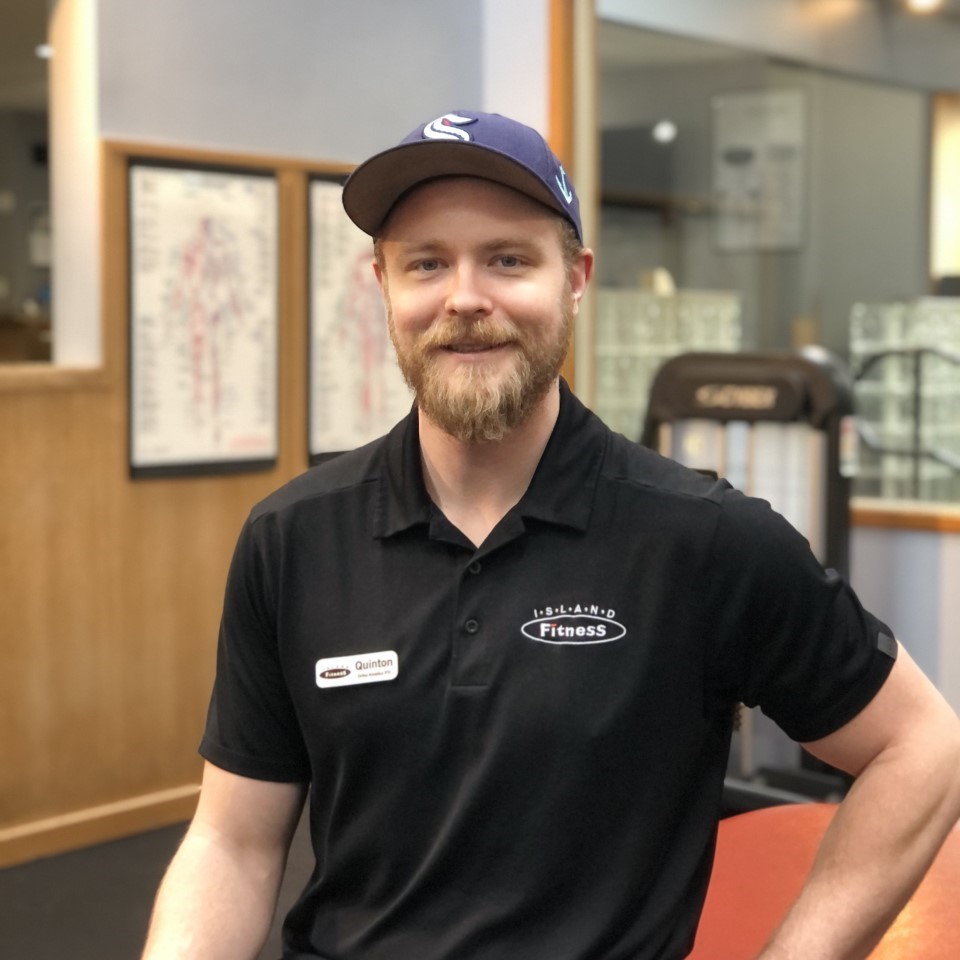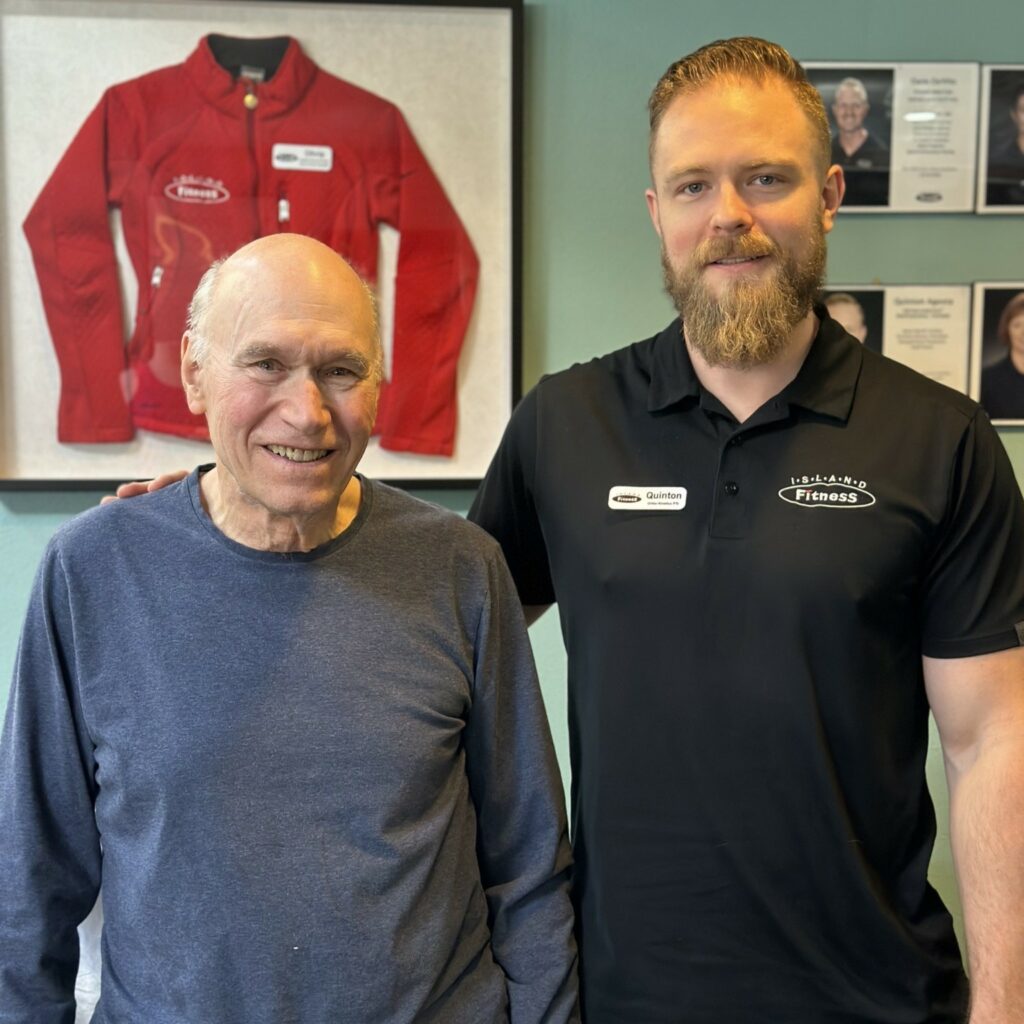April is Parkinson’s Awareness Month: Quinton Agosta Ortho-Kinetics® Professional Trainer, shares information on the disease. If you have Parkinson’s, know someone with Parkinson’s Disease or know someone who is struggling with balance and strength issues, we hope this information will be a helpful guide.
When I graduated from college with a degree in exercise science, I had a fairly narrow vision of what I wanted to do with my education. Playing 2 sports at the college level had me very focused on helping athletes reach their potential to get bigger, faster, and stronger for their sport. I envisioned myself as a strength and conditioning coach for a sports team working with young athletes.
After graduation, that’s exactly what I did. I went back to my alma mater, Bainbridge High School, and got the job as the Strength and Conditioning Coach for the Football Team. I also had the privilege of being an Assistant Coach for BHS track and field. Fast forward a couple years and I got another opportunity to be the PE Teacher and Athletic Director at Saint Cecilia Catholic School where I would teach K-8th grade students the importance of staying active and living a healthy lifestyle.
Everything after college had gone in the direction I had wanted it to. I was working with young athletes and teaching what I was passionate about. But I am always open to new opportunities and broadening my knowledge in the field of fitness. So, when I joined the team here at Island Fitness, I was excited to dabble in a new demographic of people in need.
Early into my time here at Island Fitness I was able to help with a class specifically catering to people who were diagnosed with Parkinson’s Disease. Our Punch Out Parkinson’s (POP) class was a completely new learning experience for me, but also one of the most rewarding groups of people I would ever work with.
Recently I took a Parkinson’s Specialist Training Certification course through the American Parkinson’s Disease Association and wanted to share a little about this growing population and why exercise is so important to keep them living the lives they want for as long as possible. April is Parkinson’s Awareness Month, so if you have or know someone with PD or is struggling with balance and strength issues, I hope this information will be a guide to help educate and plan what you can do to help them regain control of their lives.
Parkinson’s Disease (PD) can be defined in three ways; it is a movement disorder, a neurological disorder, and a progressive disorder. It is a movement disorder because it causes uncontrolled, slowed, or reduced movement in the bodies of individuals with the disease. It is a neurological disorder because it occurs due to changes in the brain; specifically the brain’s ability to produce enough of a very important chemical called dopamine. It is also a progressive disorder because over time the symptoms become more serious and problematic.
Physiologically what’s happening in the brain is the misfolding of alpha synuclein proteins that are naturally present in everyone’s cells. These misfolded proteins accumulate and damage neurons in the base of the brain in an area called the substantia nigra.
Unfortunately, once the symptoms of PD manifest it’s likely that over half of these dopamine producing cells have already been lost. This means that degeneration of the cells could have been happening for more than a decade leading up to the diagnosis. There is currently no known cure for Parkinson’s Disease, however there are medications which can help limit the symptoms and based on the research one of the best ways of slowing the progression is, you guessed it, regular exercise!
Parkinson’s is more common than you might think. Roughly 1 million people in the U.S. are living with the disease or about 1 in 320 people. Most people are diagnosed after the age of 50, and men are about 50% more likely to develop PD. 1 in 100 people over the age of 70, and 1 in 50 people over the age of 80 have PD. As the baby boomer generation ages, we are unfortunately expecting to see an increase in all these numbers. I’m writing this article to spread awareness and hopefully encourage people to know that exercise is scientifically proven to slow down the rate of progression people experience with PD.
There are four cardinal movement related symptoms of PD: tremors (shaking), rigidity (stiffness), bradykinesia (slow movement), and postural instability (balance problems). Over time people with PD may also experience walking difficulties and speech problems. It should be noted that these symptoms can vary drastically in individuals and the rate of progression is unpredictable.
Now if we think big picture here, most of these symptoms, with the exception of tremors, are going to happen to everyone at some point with aging. It just happens faster with PD so it makes sense that exercise would help combat these symptoms from progressing as fast as they do. With PD, one of the most important things to incorporate into training is big, exaggerated movements which is why kickboxing style classes are so effective.
As a trainer I try to provide a safe environment for these big movements to occur. The old saying “If you don’t use it, you lose it” or “Motion is lotion” are especially true in this population. As people with PD start to have gait and balance problems, there is an increase in falls which makes it more difficult to perform everyday activities without fear of falling. This usually means becoming more sedentary which only speeds up the progression of symptoms. Ensuring the exercise environment is safe by having rails to grab for balance, objects to lean against, or staying close enough to catch them as they lose balance is very important. Big exaggerated high intensity movements and limiting fall risk is paramount to ensuring this population has the best opportunity to stay moving.
Come back next week to read part 2 and learn about promising research.

Quinton Agosta
- Ortho-Kinetics® Professional Trainer
- Parkinson’s Disease Specialist Trainer
- B.S. Exercise Science, Central Washington University
- Certified Strength and Conditioning Specialist NSCA
Here’s how to support research: Donate to organizations conducting research on Parkinson’s disease.
Never miss our valuable health and wellness content. Follow us on Facebook, Instagram YouTube!

